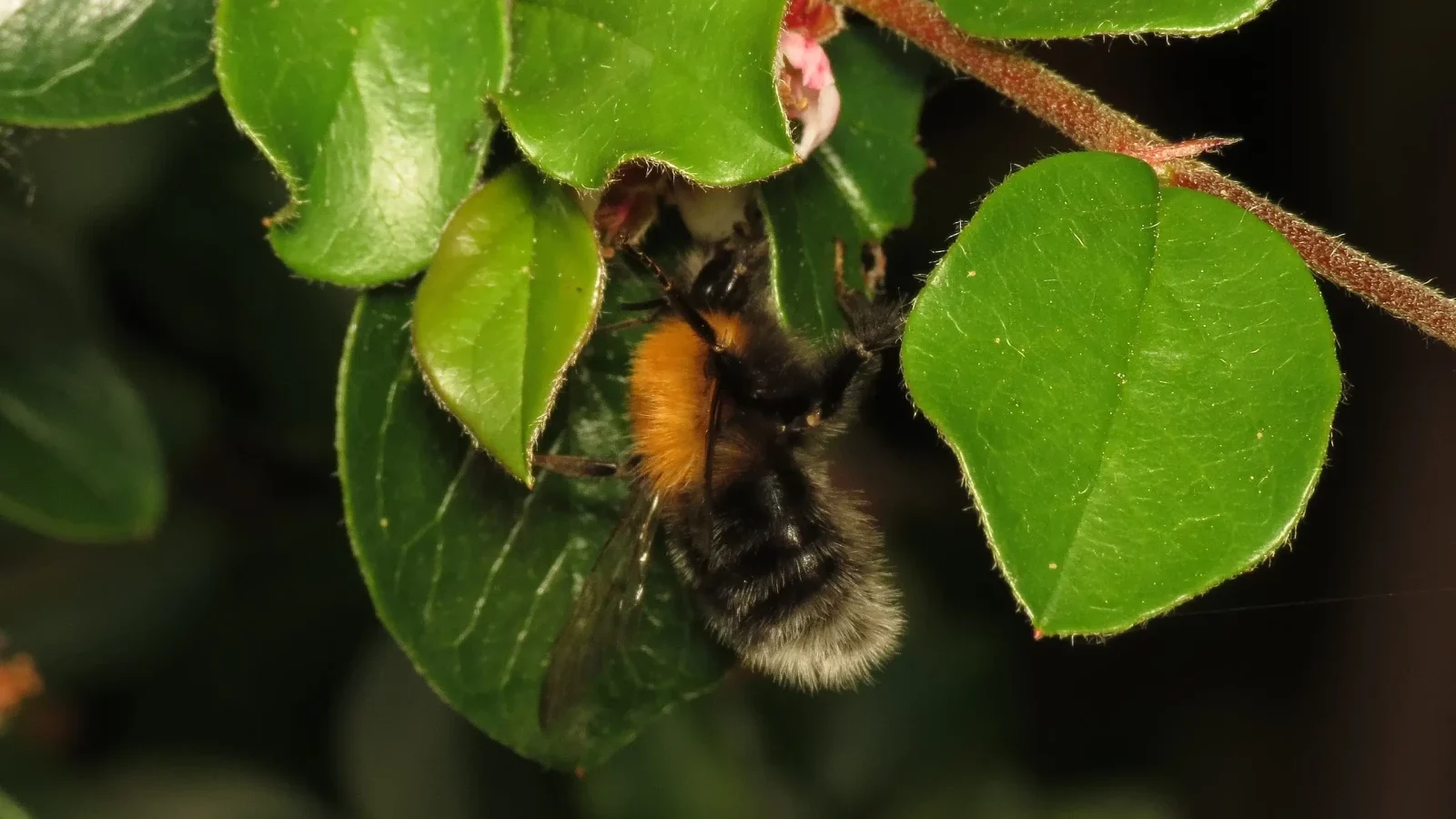Key Takeaways
- Bumblebees are generally gentle and sting only when they feel threatened.
- Unlike honeybees, bumblebees can sting multiple times without dying.
- Aggression is usually triggered by nest disturbance, sudden movements, or feeling trapped.
- Bumblebee stings cause minor redness and swelling, with severe reactions being rare.
- Avoid stings by staying calm, avoiding nests, and wearing neutral-colored clothing.
- Call professional pest control to remove bumblebee nests in busy or high-risk areas.
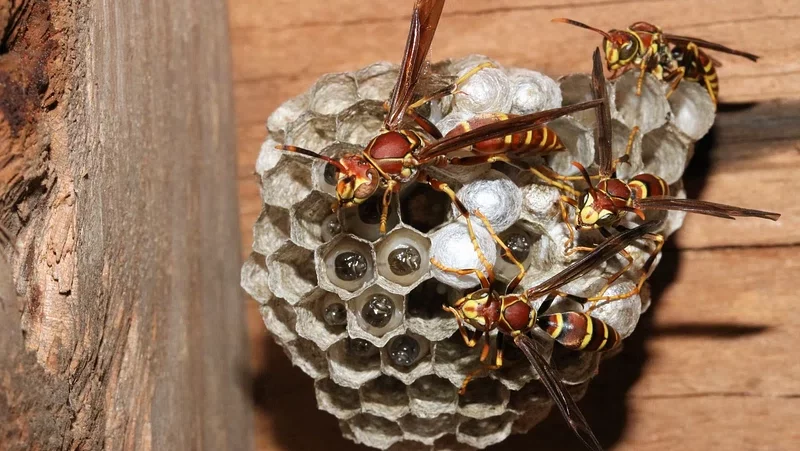 Bumblebees are known for their fuzzy bodies and gentle buzzing, often misunderstood as aggressive due to their close resemblance to more defensive insects like wasps and hornets. But are these friendly-looking pollinators truly a threat?
This article explains the true nature of bumblebee aggression, clarifying their behavior, reasons for stings, and how they differ from more aggressive insects. It provides practical tips for safely interacting with bumblebees and managing potential stings.
Not sure if you have a bumblebee issue at your home? Schedule your Free Pest Inspection Today, and let our experts identify and handle any potential pest problems quickly and safely.
Bumblebees are known for their fuzzy bodies and gentle buzzing, often misunderstood as aggressive due to their close resemblance to more defensive insects like wasps and hornets. But are these friendly-looking pollinators truly a threat?
This article explains the true nature of bumblebee aggression, clarifying their behavior, reasons for stings, and how they differ from more aggressive insects. It provides practical tips for safely interacting with bumblebees and managing potential stings.
Not sure if you have a bumblebee issue at your home? Schedule your Free Pest Inspection Today, and let our experts identify and handle any potential pest problems quickly and safely.
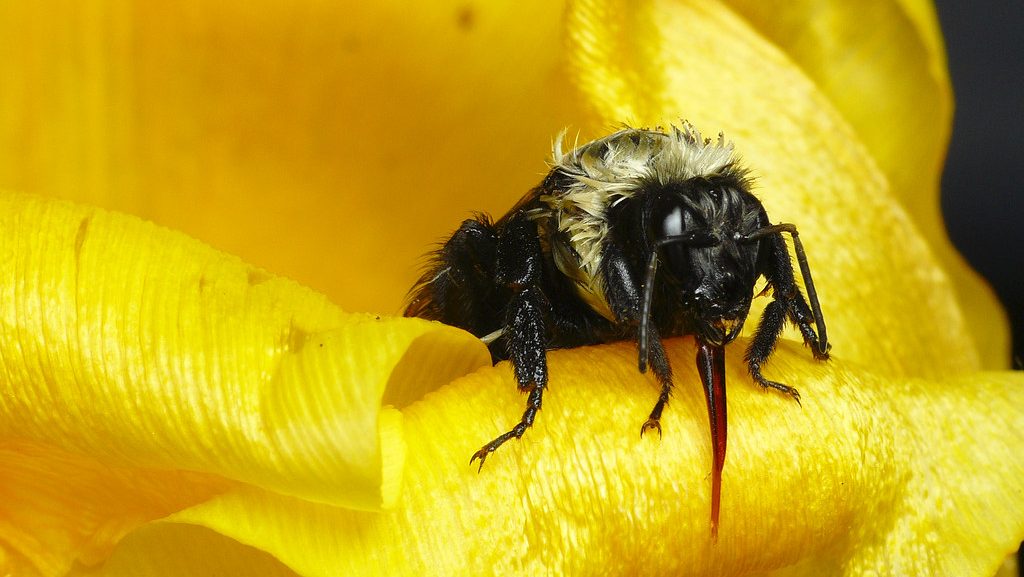

Not getting a solution?
Get your free pest control estimate today!Understanding Bumblebee Behavior
Bumblebees are often recognized for their fuzzy, friendly appearance and loud buzzing as they move from flower to flower. Typically, they’re gentle pollinators that show minimal aggression. Their daily activities revolve around pollinating flowers, collecting nectar and pollen, and nurturing their colonies. Unlike wasps or hornets, bumblebees generally do not display aggressive tendencies unless provoked or directly threatened. Bumblebees live in small colonies, usually underground or in sheltered spots, and their nests are often hidden from human sight. Understanding that their primary goal is pollination, rather than defending territory aggressively, helps clarify their typically passive nature.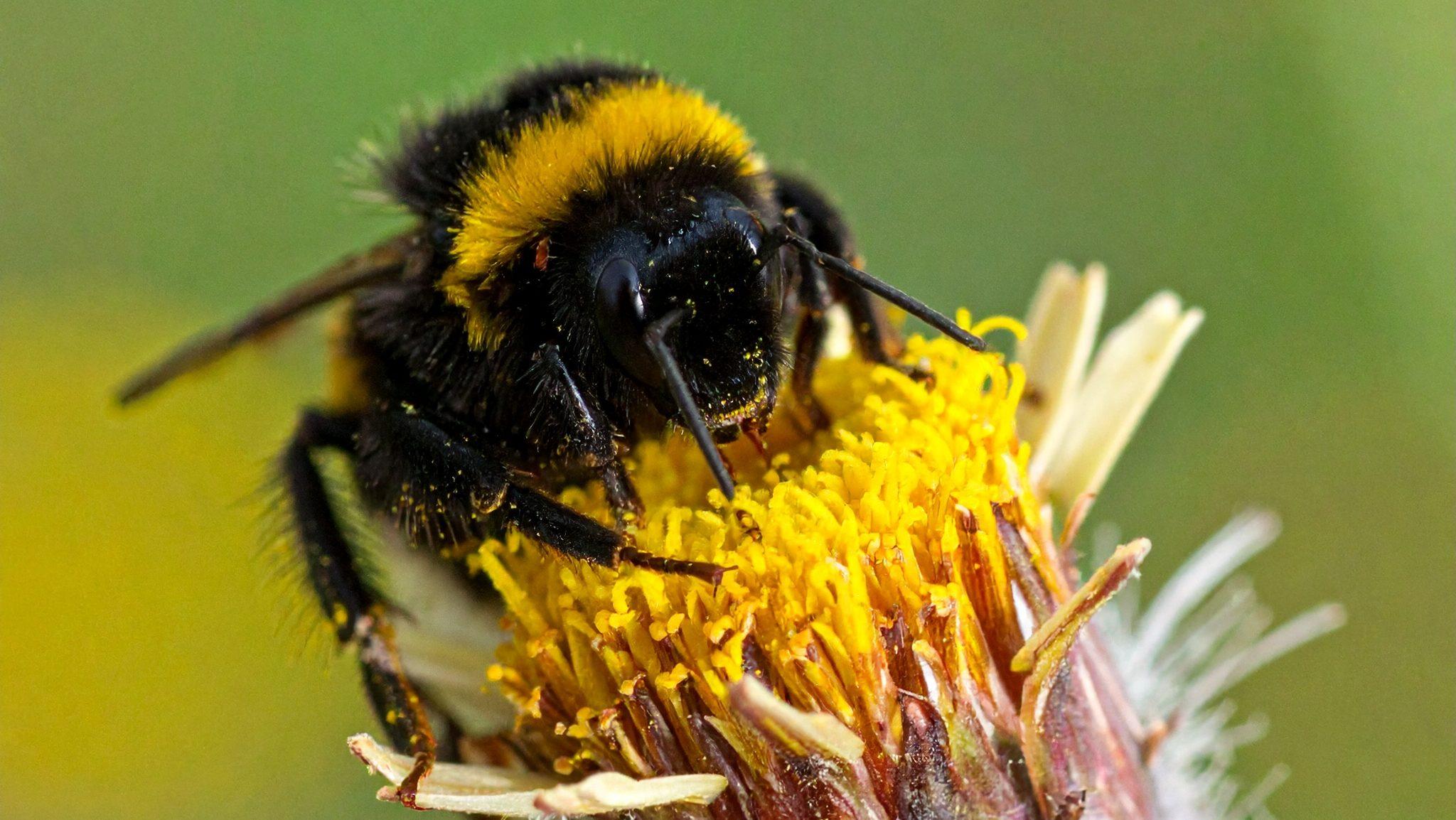
Are Bumble Bees Aggressive?
Bumble bees are generally non-aggressive and avoid confrontation. They are primarily focused on foraging for nectar and pollen to support their colony. However, there are specific situations where they may become defensive:Situations That Trigger Bumble Bee Aggression
-
 Disturbing Their Nest: Bumble bees are highly protective of their nests and will defend them if they feel threatened.
Disturbing Their Nest: Bumble bees are highly protective of their nests and will defend them if they feel threatened. -
 Sudden Movements: Quick or aggressive actions, such as swatting at them, can provoke a sting.
Sudden Movements: Quick or aggressive actions, such as swatting at them, can provoke a sting. -
 Lack of Escape Routes: If a bumble bee feels trapped, it may resort to stinging as a last resort.
Lack of Escape Routes: If a bumble bee feels trapped, it may resort to stinging as a last resort. -
 They Feel Trapped or Squeezed: Accidentally stepping on or handling a bumblebee can provoke it to sting in self-defense.
They Feel Trapped or Squeezed: Accidentally stepping on or handling a bumblebee can provoke it to sting in self-defense. -
 Predators are Nearby: Bumblebees may show aggression toward potential threats, like animals or birds, to protect their nest.
Predators are Nearby: Bumblebees may show aggression toward potential threats, like animals or birds, to protect their nest.
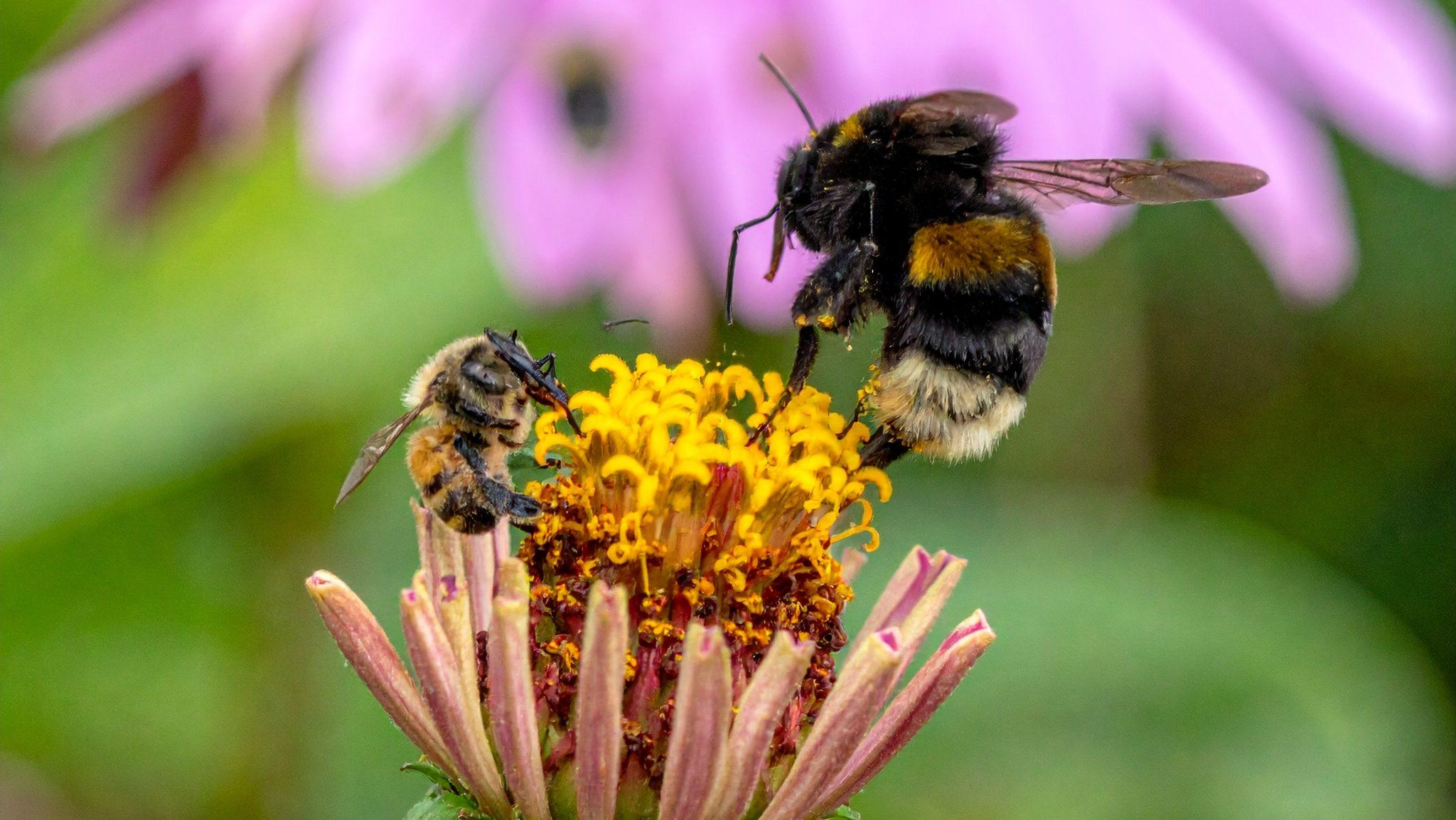
Bumblebees vs. Honeybees: Comparing Aggression
- While both bumblebees and honeybees play essential roles as pollinators, they exhibit different behaviors when it comes to aggression and defense:
-
Bumblebees: Generally gentle and non-aggressive. They sting only when provoked and do not swarm, reducing the risk of multiple stings.
-
Honeybees: More defensive, especially near their hive. They may sting to protect their colony and can swarm aggressively when threatened.
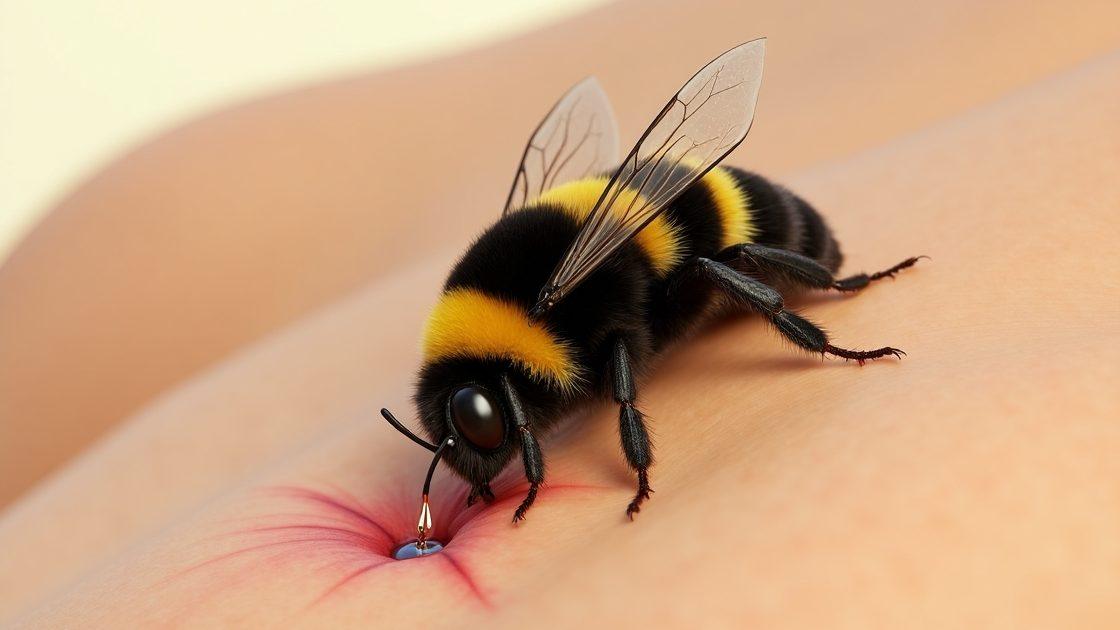
What Does a Bumble Bee Sting Look Like?
- Bumble bee stings are typically characterized by:
-
Redness and Swelling: The sting site often becomes red and slightly puffy shortly after the sting occurs.
-
Mild Pain or Discomfort: Bumble bee stings are typically less painful than wasp stings but can still cause localized soreness.
-
Possible Allergic Reactions: Though rare, reactions like hives, widespread swelling, or difficulty breathing require emergency medical attention.
Do Bumblebees Sting Humans?
Yes, bumblebees can sting humans, but it’s uncommon. Unlike honeybees, a bumblebee’s stinger isn’t barbed, meaning they can sting multiple times if necessary. However, bumblebees typically avoid stinging unless they feel severely threatened or cornered. The sting from a bumblebee usually causes mild pain, redness, swelling, and occasional itching—similar to most bee or insect stings. Severe reactions are rare but possible, especially in individuals allergic to bee venom. Immediate cleaning, application of ice, and antihistamines usually suffice for treatment. Seek medical help if you experience severe swelling, dizziness, or difficulty breathing following a sting.First-Aid Tips for Bumble Bee Stings
-
Wash the area with soap and water to prevent infection.
-
Apply a cold compress to reduce swelling.
-
Use over-the-counter antihistamines or pain relievers for discomfort.
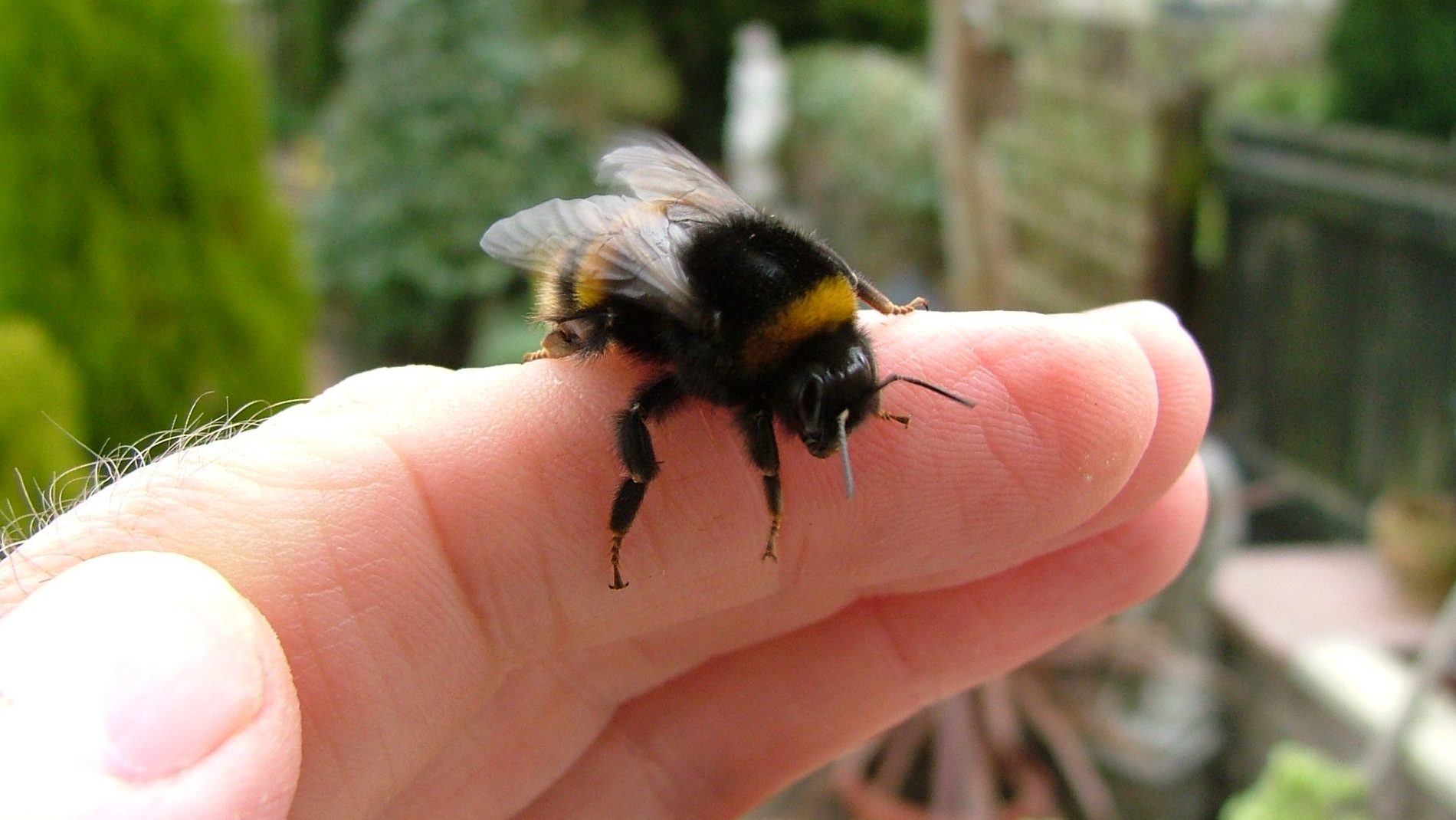
How Many Times Can a Bumble Bee Sting?
- Unlike honeybees, which die after stinging, bumble bees retain their stinger. This means they can sting multiple times without harm to themselves. However, bumble bees are not inherently aggressive and will only sting under certain conditions:
-
When Threatened: Bumble bees will sting if they sense danger to themselves or their nest.
-
Defensive Behavior: They may sting when provoked—such as by sudden movements or attempts to swat them.
Common Myths About Bumblebee Aggression
Bumblebees often fall victim to myths due to their intimidating appearance and loud buzz. Clearing up these myths helps promote coexistence and reduce fear:| Myth | Fact |
|---|---|
| Bumblebees are aggressive and frequently sting people. | Bumblebees are gentle pollinators that only sting in self-defense. |
| Bumblebees attack humans for no reason. | They become defensive only when their nest or colony is disturbed. |
| Bumblebee stings are extremely dangerous. | Most stings cause minor discomfort unless the person is allergic, in which case medical attention is needed. |
Tips to Avoid Bumblebee
- Even though bumblebees are not generally aggressive, taking simple precautions like removing food sources that can attract bumblebees can reduce any chance of unwanted stings:
-
Stay Calm: Avoid swatting or making sudden movements around bees—calm, slow actions reduce the risk of a defensive sting.
-
Avoid Disturbing Nests: Watch for nest sites in logs, compost piles, and ground holes, and give them plenty of space.
-
Cover Sweet Food and Drinks: Sugary items can attract bees during outdoor meals—keep them sealed or covered.
-
Wear Neutral Colors: Choose muted, non-floral clothing and avoid strong scents that may attract curious bees.
-
Seal Entry Points: Close gaps and cracks around your home to prevent bees from nesting in walls or attics.
-
Professional Help: If a nest is near high-traffic areas, contact a pest control expert rather than trying to remove it yourself.
